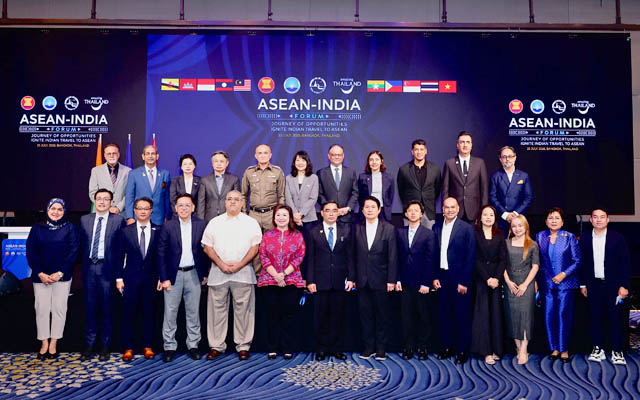ASEAN tourism leaders are calling on member states to present a unified front to tap the full potential of India’s booming outbound travel market, positioning the region as a culturally rich, seamless destination.
The call was made during the ASEAN-India Forum in Bangkok, hosted by the Tourism Authority of Thailand (TAT) in celebration of the ASEAN-India Year of Tourism 2025 and under the ASEAN-India Cooperation Work Plan 2023–2027 – of which Thailand has been designated the lead country for promotion and marketing.

“India is now one of the fastest-growing source markets for ASEAN, with over five million travellers recorded in 2024,” said Verna Esmeralda C Buensuceso, chair of ASEAN NTOs and assistant secretary at the Philippines Department of Tourism.
“This growth is being fuelled by economic trends, policy changes, and evolving travel preferences,” she added.
Thailand alone welcomed more than two million Indian arrivals in 2024, placing India among its top three inbound markets, shared Pattaranong Na Chiangmai, TAT’s deputy governor for International Marketing (Asia & South Pacific).
She noted that Thailand, Singapore, Malaysia, and Indonesia all ranked among the top 15 destinations for Indian travellers in 2023.
Buensuceso highlighted recent visa liberalisation measures by ASEAN countries.
“Thailand, Malaysia, Vietnam, and Indonesia have led the charge, offering visa-free or simplified entry processes to Indian visitors,” she observed, mentioning that air capacity from India to South-east Asia is projected to surpass pre-pandemic levels by 2025.
The forum also spotlighted cruise tourism as a growth opportunity. In June, the inaugural ASEAN-India Cruise Dialogue in Chennai brought together all 10 ASEAN nations to discuss the creation of a regional cruise network.
ASEAN secretary-general Kao Kim Hourn urged the region to shift perception from a cluster of destinations to “one incredible region – connected, diverse, and culturally rich”.
He called for co-branded campaigns that appeal to Indian sensibilities, such as “Bollywood-style escapes, spiritual trails, and multigenerational family holidays”, and outlined a three-pronged strategic focus: connectivity, inclusivity, and sustainability.
“We must collaborate on new city-pair routes, ensure culturally inclusive tourism experiences, and promote low-carbon, climate-smart travel. Tourism is not just an economic driver – it is a bridge for deeper connection. Every journey taken strengthens our regional bonds,” he summarised.
The forum concluded with a roundtable between ASEAN NTOs and Indian travel stakeholders to discuss best practices, operational challenges, and future collaboration. A technical visit to Pattaya followed on July 24, showcasing Thailand’s readiness to serve the Indian market and adapt its offerings to high-yield segments.











